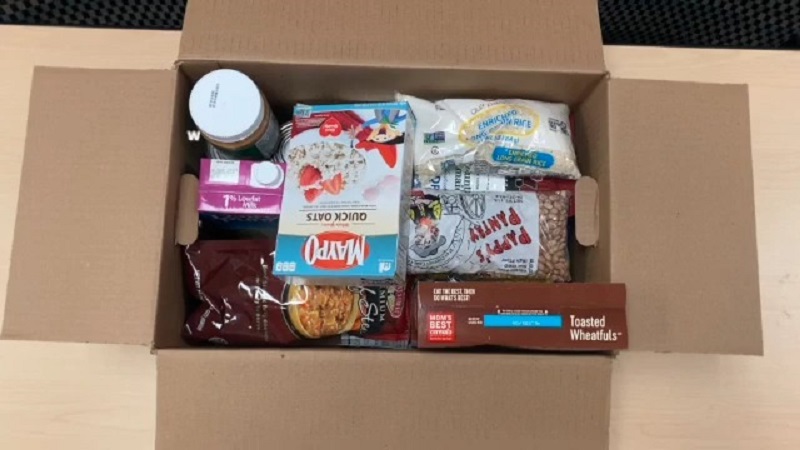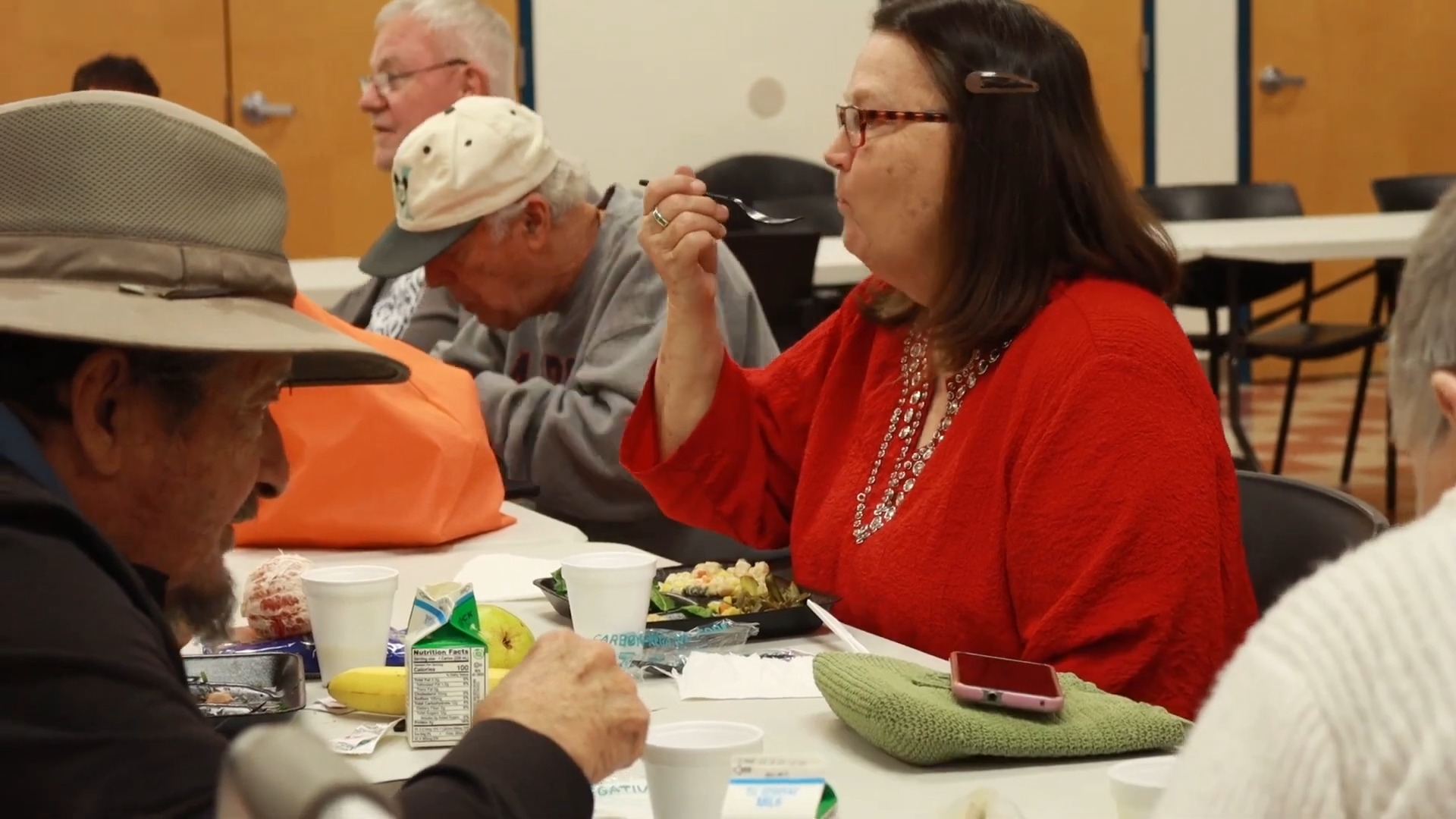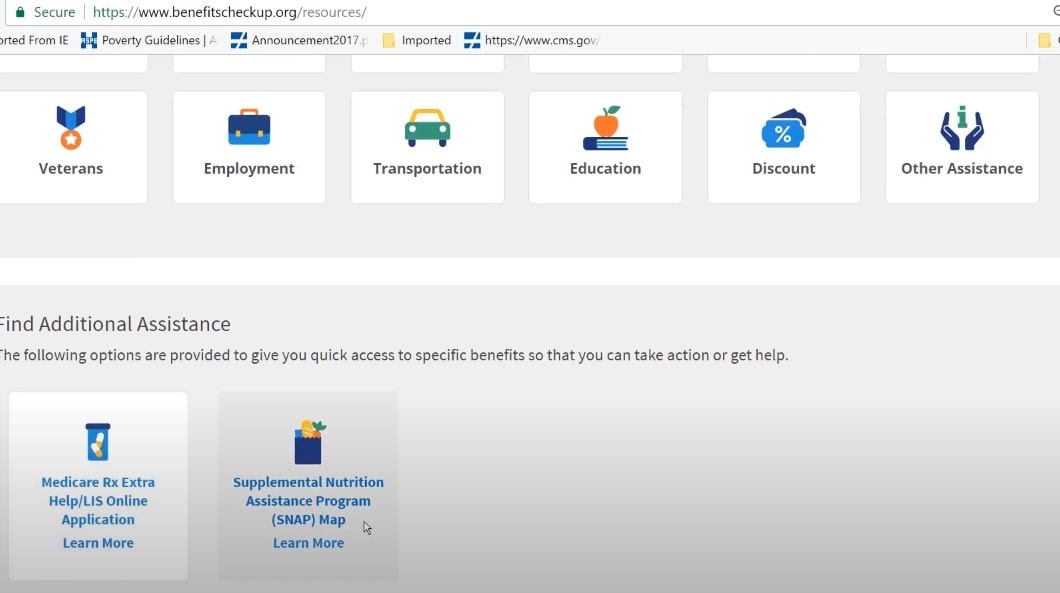For many seniors, managing food costs on a fixed income can be a significant challenge. Rising grocery prices and limited resources often make it difficult for older adults to access the nutritious food they need. Thankfully, there are various programs and services available to help seniors reduce their food expenses and improve their overall well-being.
Table of Contents
Toggle1. Supplemental Nutrition Assistance Program (SNAP)

| Eligibility | Based on income, household size, and expenses |
| Benefits | Monthly financial aid via EBT card |
| Where to Use | Grocery stores, farmers’ markets, online retailers |
| Application Process | Online, by mail, or in person through the state SNAP office |
| Required Documentation | Income proof, expense receipts, household information |
| Additional Support | Some states offer assistance with the application process |
The Supplemental Nutrition Assistance Program (SNAP) is a federal assistance program designed to help low-income individuals and families, including seniors, afford nutritious food. By providing monthly financial aid through an Electronic Benefits Transfer (EBT) card, SNAP ensures that seniors can maintain a healthy diet without straining their limited budgets.
Also, check out what age is considered a senior citizen in the US.
How SNAP Works
SNAP benefits are distributed via an EBT card, which works like a debit card and can be used at authorized food retailers, including grocery stores, farmers’ markets, and some online retailers. The amount of financial assistance provided depends on the applicant’s income, household size, and certain expenses, such as medical costs.
Eligibility Criteria
Eligibility for SNAP is based on several factors:
- Income: Applicants must meet specific income limits, which vary by state and household size. Typically, the income limit is set at 130% of the federal poverty line.
- Household Size: Benefits are adjusted based on the number of people in the household.
- Expenses: Allowable expenses, such as medical bills and housing costs, are deducted from the household income to determine eligibility and benefit amounts.
Application Process
Seniors can apply for SNAP through their state’s SNAP office. The application process generally involves the following steps:
- Online Application: Many states offer online portals where seniors can submit their applications.
- Mail or In-Person Application: Seniors can also apply by mailing in a paper application or by visiting a local SNAP office.
- Verification: Applicants need to provide documentation to verify their income, expenses, and household size. This may include pay stubs, rent or mortgage statements, utility bills, and medical expense receipts.
- Interview: A SNAP representative may conduct a phone or in-person interview to verify the applicant’s information.
Benefits of SNAP
Participating in SNAP offers several benefits to seniors:
- Nutritional Support: SNAP provides funds specifically for purchasing food, ensuring that seniors can afford nutritious options.
- Economic Stability: By alleviating the burden of food costs, SNAP allows seniors to allocate their limited resources to other essential needs, such as housing and healthcare.
- Community Impact: Spending SNAP benefits at local retailers supports the economy, as each dollar spent generates economic activity and jobs.
Applying for SNAP can significantly ease the financial burden on seniors, ensuring they have access to nutritious food while managing their other expenses. This program is a vital resource for maintaining health and well-being in the senior population.
2. Senior Farmers’ Market Nutrition Program (SFMNP)
| Eligibility | Seniors aged 60+, income at or below 185% of the federal poverty level |
| Benefits | Coupons/vouchers for fresh produce |
| Where to Use | Farmers’ markets, roadside stands, community-supported agriculture programs |
| Application Process | Contact a local agency, provide proof of age and income |
| Coupon Distribution | Annually during the harvest season |
| Additional Support | Some programs offer nutrition education and cooking classes |
The Senior Farmers’ Market Nutrition Program (SFMNP) aims to provide low-income seniors with access to fresh, locally grown fruits, vegetables, honey, and herbs. This program not only helps improve the nutritional intake of seniors but also supports local farmers and markets.
How SFMNP Works
SFMNP provides eligible seniors with coupons or vouchers that can be used to purchase fresh produce at farmers’ markets, roadside stands, and community-supported agriculture programs. These coupons are distributed annually and can be used during the harvest season, typically from late spring to early fall.
Eligibility Criteria
To qualify for SFMNP, seniors must meet the following criteria:
- Age: Applicants must be 60 years or older.
- Income: Applicants must have an income at or below 185% of the federal poverty level. Specific income limits may vary by state.
Application Process
The application process for SFMNP generally involves the following steps:
- Local Agency Contact: Seniors must contact their local agency or state department responsible for administering the SFMNP. Information is usually available through the state’s Department of Agriculture or equivalent agency.
- Documentation: Applicants may need to provide proof of age and income to verify their eligibility.
- Coupon Distribution: Once approved, seniors receive coupons or vouchers that they can use to buy eligible foods from authorized farmers’ markets and other designated locations.
Benefits of SFMNP
Participating in SFMNP offers several benefits to seniors:
- Access to Fresh Produce: Seniors can purchase a variety of fresh, nutritious fruits and vegetables that they might not otherwise be able to afford.
- Support for Local Farmers: By using their vouchers at farmers’ markets, seniors help support local agriculture and small businesses.
- Improved Nutrition: Regular consumption of fresh produce can significantly improve the dietary habits and overall health of seniors.
By participating in SFMNP, seniors can enjoy the benefits of fresh, locally sourced produce, which can contribute to better health and well-being. The program also fosters a stronger connection between seniors and their local communities.
3. Commodity Supplemental Food Program (CSFP)
| Eligibility | Seniors aged 60+, income at or below 130% of the federal poverty level |
| Benefits | Monthly food packages |
| Food Contents | Cereal, juices, canned fruits and vegetables, pasta, dairy products |
| Application Process | Contact a local agency, provide proof of age and income |
| Distribution | Monthly at local sites, home delivery in some areas |
| Additional Support | Connection to local resources and support services |
The Commodity Supplemental Food Program (CSFP) provides low-income seniors with a monthly package of nutritious food. This program is designed to improve the health and nutrition of older adults by supplementing their diets with USDA-approved foods.
How CSFP Works
CSFP distributes food packages to eligible seniors through local agencies. These packages include a variety of foods such as cereal, juices, canned fruits and vegetables, pasta, and dairy products. The food is selected to meet the nutritional needs of seniors, ensuring they receive a balanced diet.
Eligibility Criteria
To qualify for CSFP, seniors must meet the following criteria:
- Age: Applicants must be 60 years or older.
- Income: Applicants must have an income at or below 130% of the federal poverty level. Specific income limits may vary by state.
Application Process
The application process for CSFP generally involves the following steps:
- Local Agency Contact: Seniors must contact their local agency or state department responsible for administering the CSFP. Information is usually available through the state’s Department of Agriculture or equivalent agency.
- Documentation: Applicants need to provide proof of age and income to verify their eligibility.
- Food Distribution: Once approved, seniors receive monthly food packages from local distribution sites. In some areas, home delivery may be available for those unable to pick up their food.
Benefits of CSFP
Participating in CSFP offers several benefits to seniors:
- Monthly Food Packages: Seniors receive a consistent supply of nutritious food, helping to alleviate food insecurity.
- Nutritional Support: The food packages are designed to meet the specific dietary needs of seniors, ensuring they receive essential nutrients.
- Community Support: By participating in CSFP, seniors can also connect with local agencies that provide additional resources and support.
4. Home-Delivered Meals
| Eligibility | Seniors aged 60+, based on need due to physical or mental limitations |
| Benefits | Regular delivery of nutritious meals |
| Meal Contents | Balanced meals designed to meet dietary requirements |
| Application Process | Contact local programs, assessment, and enrollment |
| Delivery Schedule | Typically several times a week |
| Additional Support | Social interaction and safety checks from delivery personnel |
Home-delivered meal programs, such as Meals on Wheels, provide nutritious meals directly to the homes of seniors who are unable to prepare their own food. These programs are essential for seniors with mobility issues or those who live alone and may struggle with daily meal preparation.
How Home-Delivered Meals Work
Meals on Wheels and similar programs deliver meals to seniors’ homes on a regular schedule, usually several times a week. The meals are designed to meet the nutritional needs of older adults and often include a variety of options to cater to different dietary requirements. Volunteers or program staff typically deliver the meals, offering not only food but also social interaction and a safety check.
Eligibility Criteria
Eligibility for home-delivered meals varies by program but generally includes:
- Age: Typically 60 years or older.
- Need: Based on the inability to prepare meals due to physical or mental limitations.
- Income: Some programs consider income levels, but many provide meals regardless of income to ensure no senior goes hungry.
Application Process
The application process for home-delivered meals usually involves the following steps:
- Contact Local Program: Seniors or their caregivers should contact their local Meals on Wheels program or similar organization.
- Assessment: An assessment may be conducted to determine the senior’s need for the service. This can involve a home visit or a phone interview.
- Enrollment: Once approved, the senior will be enrolled in the program and start receiving meals according to the program’s schedule.
Benefits of Home-Delivered Meals
Participating in home-delivered meal programs offers several benefits to seniors:
- Nutritious Meals: Ensures that seniors receive balanced, nutritious meals regularly.
- Convenience: Meals are delivered directly to the senior’s home, reducing the need for grocery shopping and meal preparation.
- Social Interaction: Regular visits from volunteers or staff provide social interaction and can help reduce feelings of isolation.
- Safety Checks: Delivery personnel often check on the well-being of the seniors, providing an added layer of safety.
5. Senior Food Pantries and Food Banks
| Eligibility | Seniors aged 60+, typically low-income |
| Benefits | Free groceries |
| Food Contents | Variety of nutritious food items |
| Application Process | Find local food bank, registration if required, shopping or distribution |
| Additional Support | Nutrition education, cooking classes, health screenings |
Senior food pantries and food banks play a crucial role in providing free groceries to older adults. These programs ensure that seniors have access to a variety of nutritious foods without the financial burden, helping to reduce food insecurity among the elderly.
How Senior Food Pantries and Food Banks Work
Senior food pantries and food banks operate by distributing food to seniors in need. Many food banks have special hours or designated days for seniors to shop for groceries. These organizations often partner with local community centers, religious organizations, and other nonprofits to reach a broad audience.
Eligibility Criteria
Eligibility for senior food pantries and food banks may vary but generally include:
- Age: Seniors typically need to be 60 years or older.
- Income: Many programs are designed to assist low-income seniors, though specific income limits can vary by location and program.
Application Process
The process to access food from senior food pantries and food banks generally includes the following steps:
- Find a Local Food Bank or Pantry: Seniors or their caregivers can use online resources or contact local agencies to locate the nearest food bank or pantry.
- Registration: Some food banks require registration, where seniors provide basic information such as age, income, and household size.
- Shopping or Distribution: Depending on the program, seniors may visit the food bank during designated hours to select their groceries, or they may receive pre-packed food boxes.
Benefits of Senior Food Pantries and Food Banks
Participating in senior food pantries and food banks offers several benefits:
- Access to Free Groceries: Provides a variety of nutritious food items at no cost, helping to alleviate financial stress.
- Nutritional Support: Ensures that seniors receive a balanced diet with essential nutrients.
- Community Engagement: Many food banks offer additional services such as nutrition education, cooking classes, and health screenings.
6. Community Meal Programs
| Eligibility | Seniors aged 60+, need-based |
| Benefits | Free or low-cost nutritious meals |
| Meal Contents | Balanced meals designed to meet dietary requirements |
| Application Process | Contact local providers, registration if required |
| Program Schedule | Several times a week |
| Additional Support | Social interaction, health screenings, nutrition education |
Community meal programs provide seniors with nutritious meals in a social setting, often hosted at local senior centers, churches, or community centers. These programs are vital for seniors who may struggle with meal preparation or feel isolated.
How Community Meal Programs Work
Community meal programs typically offer free or low-cost meals to seniors several times a week. Meals are prepared by volunteers or staff and are served in a communal setting, allowing seniors to socialize while enjoying a nutritious meal. Some programs may also provide transportation to and from the meal site for those who need it.
Eligibility Criteria
Eligibility for community meal programs generally includes:
- Age: Seniors must be 60 years or older.
- Need: These programs are often aimed at seniors who have difficulty preparing meals or who lack regular access to nutritious food.
Application Process
The application process for community meal programs usually involves:
- Contacting Local Providers: Seniors or their caregivers can contact local senior centers, community centers, or religious organizations to find meal programs in their area.
- Registration: Some programs may require seniors to register, providing basic information such as age and any dietary restrictions.
- Participation: Once registered, seniors can attend meal sessions according to the program’s schedule.
Benefits of Community Meal Programs
Participating in community meal programs offers numerous benefits to seniors:
- Nutritional Support: Ensures access to balanced and nutritious meals.
- Social Interaction: Provides an opportunity for seniors to socialize, reducing feelings of isolation and loneliness.
- Support Services: Many programs offer additional services such as health screenings, nutrition education, and recreational activities.
7. BenefitsCheckUp and Local 211 Services
| Feature | Details |
|---|---|
| Eligibility | Primarily for seniors aged 60+, based on need |
| Benefits | Access to a wide range of benefits and assistance programs |
| Service Type | Online screening (BenefitsCheckUp), helpline (211 services) |
| Application Process | An online questionnaire (BenefitsCheckUp), call or online search (211) |
| Additional Support | Information on local food banks, meal programs, and other resources |
BenefitsCheckUp and 211 services provide seniors with access to a wide range of resources and assistance programs, including food assistance. These services help seniors identify and apply for benefits they might be eligible for, ensuring they receive the support they need.
How BenefitsCheckUp and 211 Services Work
BenefitsCheckUp, an initiative by the National Council on Aging (NCOA), is a free online service that screens seniors for over 2,000 public and private benefits programs, including food assistance. Local 211 services offer a helpline that connects individuals to local resources, including food banks, meal programs, and other assistance services.
Eligibility Criteria
Eligibility criteria for BenefitsCheckUp and 211 services vary depending on the specific programs and services being accessed. Generally, these services are available to:
- Age: Primarily for seniors aged 60 and older.
- Need: Based on income, health status, and other factors to determine eligibility for various assistance programs.
Application Process
The application process for using BenefitsCheckUp and 211 services includes:
BenefitsCheckUp
- Online Screening: Seniors can visit the BenefitsCheckUp website and complete an online questionnaire to identify eligible programs.
- Program Information: The service provides detailed information on how to apply for each identified benefit.
211 Services
- Call 211: Seniors can call the 211 helpline to speak with a trained professional who will provide information on local food assistance programs and other resources.
- Online Search: Many 211 services also offer an online search tool to find local resources and assistance.
Benefits of BenefitsCheckUp and 211 Services
Utilizing BenefitsCheckUp and 211 services offers several benefits:
- Comprehensive Screening: Identifies multiple benefits and assistance programs that seniors may be eligible for, including food assistance.
- Ease of Access: Provides easy access to information and assistance, both online and via phone.
- Local Resources: Connect seniors with local food banks, meal programs, and other community resources.
Conclusion
There are numerous programs and resources available to provide essential support. From federal assistance programs like SNAP and CSFP to community-focused initiatives such as local food banks and meal programs, these services ensure that seniors have access to nutritious food.
Additionally, tools like BenefitsCheckUp and 211 services help seniors identify and apply for these benefits, enhancing their overall well-being. By taking advantage of these resources, seniors can significantly reduce their food expenses and improve their quality of life.
Related Posts:
- No Assisted Living Nearby? Here’s How Small-Town…
- 19 Home Improvement Ideas To Help Seniors Feel…
- 7 Simple Ways to Improve Focus and Memory After Age 65
- 10 Natural Ways to Improve Joint Flexibility After Age 65
- Why You Might Need a Letter of Competency (and How…
- Pacemaker Surgery Recovery in the Elderly - What to…













